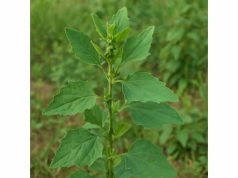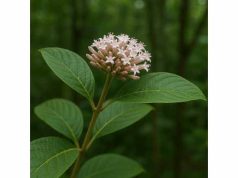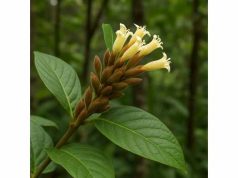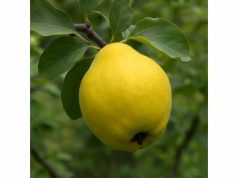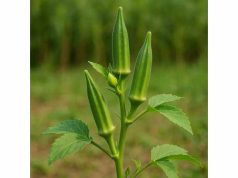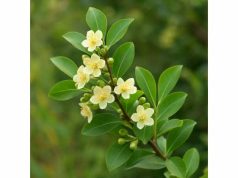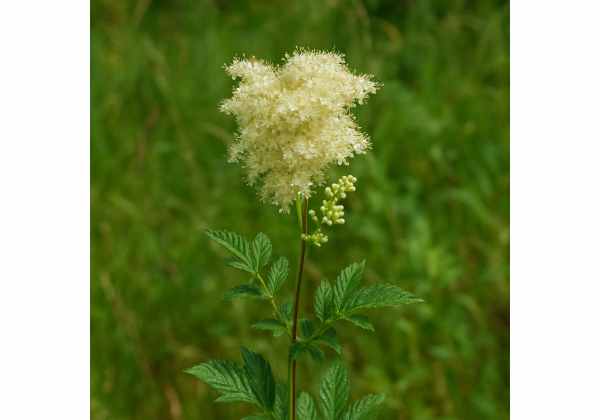
Queen of the Meadow is an enchanting herb known for its remarkable health benefits, potent active compounds, and diverse medicinal properties. Celebrated for its anti-inflammatory, antioxidant, and digestive support, this herb is also prized for its calming effects and gentle healing capabilities. Rich in bioactive molecules such as essential oils, flavonoids, and coumarins, Queen of the Meadow offers both culinary and therapeutic applications. Traditionally used in herbal remedies and natural skincare, its versatility has made it a cornerstone in holistic wellness practices. Today, its integration into modern herbal medicine underscores its enduring relevance and broad range of uses.
Table of Contents
- Botanical Insights and Identification Markers
- Phytochemical Overview and Key Constituents
- Holistic Benefits and Vital Attributes
- Usage Strategies and Risk Management
- Scientific Discoveries and Significant Studies
- Frequently Asked Questions
Botanical Insights and Identification Markers
Queen of the Meadow, scientifically recognized by its unique taxonomy, belongs to a distinguished group of flowering plants that have adapted seamlessly to a variety of temperate climates. This herb is noted for its sprawling growth habit, delicate, pale blooms, and finely textured leaves that seem to dance in the breeze. Botanically, Queen of the Meadow is classified under the family Asteraceae, a grouping renowned for its composite inflorescences that consist of numerous small flowers arranged in a seemingly single blossom.
The plant’s physical structure is as distinctive as its name. It typically features slender stems that rise gracefully from a robust, fibrous root system adapted for nutrient absorption in diverse soil types. The leaves are elongated, slightly serrated, and arranged in a rosette pattern at the base, gradually giving way to airy, lance-shaped foliage along the flowering stalks. The inflorescence itself is a delightful array of modest, star-like flowers that capture the light with a soft, almost ethereal glow.
Queen of the Meadow thrives in well-drained soils rich in organic matter and prefers full sun exposure, although it tolerates partial shade. Its natural habitat spans meadows, woodland clearings, and riparian zones where the moisture is optimal for growth. Ecologically, the herb plays a significant role by attracting beneficial insects such as bees, butterflies, and other pollinators that aid in the reproductive cycle of surrounding flora.
Historically, the appearance of Queen of the Meadow has inspired both artistic representation and folklore. Local legends often highlight its purity and healing power, attributing mystical qualities to its gentle fragrance and soft petals. These attributes have contributed to its longstanding use in natural medicine and have cemented its status as a symbol of hope and renewal across diverse cultures. Gardeners and herbalists value the plant not only for its aesthetic appeal but also for its resilience and ease of propagation through both seeds and division methods. Its ability to rejuvenate soil health while providing nourishment for the ecosystem makes it indispensable in ecological landscaping.
Moreover, detailed botanical studies reveal that the plant’s subtle aroma is a complex blend of volatile oils produced in specialized glandular structures on the leaves and stems. These natural perfumes not only attract pollinators but also serve as a natural pest deterrent. The interplay between its physical beauty and functional contributions underscores Queen of the Meadow’s importance both in nature and in human wellness traditions, providing a foundation for its diverse applications in modern herbal practices.
Phytochemical Overview and Key Constituents
The therapeutic potential of Queen of the Meadow is rooted in its intricate phytochemical composition. The herb’s effectiveness is attributed to an array of bioactive molecules that work in synergy to offer a broad spectrum of health benefits. Below is a comprehensive exploration of the key constituents and their roles:
- Essential Volatile Oils
These oils contribute to the herb’s signature aroma and are crucial for its anti-inflammatory and antimicrobial activities. The volatile compounds promote blood circulation and are known to ease mild muscular pains and skin irritations. - Coumarins
Naturally occurring coumarins have a mild anticoagulant effect and may assist in reducing inflammation. Their ability to improve circulatory health is significant, with emerging research suggesting their potential role in mitigating the risk of thrombotic conditions. - Flavonoids
Acting as potent antioxidants, flavonoids help combat oxidative stress by neutralizing free radicals. Their presence reinforces the herb’s capacity to bolster the immune system and support cellular longevity, contributing to overall health and preventive care. - Polyacetylenes
This group of compounds is noted for its anti-inflammatory properties and has shown promise in enhancing digestive comfort. Polyacetylenes also exhibit mild antimicrobial actions, potentially inhibiting the growth of pathogens responsible for minor infections. - Carotenoids
Carotenoids, which lend subtle color to the plant’s tissues, are powerful antioxidants that support vision and skin health. They also contribute to the herb’s overall nutritional value by supporting immune functions and cellular health. - Phenolic Acids
These compounds demonstrate significant antioxidant capacity by scavenging harmful free radicals. Phenolic acids contribute to the maintenance of healthy tissues and help in reducing the oxidative damage associated with environmental stressors. - Terpenoids
Terpenoids in Queen of the Meadow are responsible for a variety of biological activities, including anti-cancer properties and immune system modulation. They support not only the herb’s anti-inflammatory actions but also offer a complementary role in balancing metabolic processes.
Each component is intricately linked to the herb’s overall efficacy, and together they create a natural matrix that enhances the body’s intrinsic healing mechanisms. Advanced analytical techniques, including high-performance liquid chromatography and gas chromatography-mass spectrometry, have been employed by researchers to isolate these compounds, thereby confirming their presence and determining their concentrations in various parts of the plant.
The extraction and concentration of these bioactive molecules are essential steps in formulating herbal preparations. Traditional extraction methods, such as cold pressing and infusion, have been refined over time, ensuring the preservation of these delicate compounds. This careful handling maximizes the beneficial properties of Queen of the Meadow and makes it ideal for use in teas, tinctures, and topical applications.
The extensive research into the phytochemistry of this herb highlights its importance in alternative medicine. With its complex profile of active ingredients, Queen of the Meadow is not only a valuable dietary supplement but also a subject of ongoing studies aimed at unraveling its molecular mechanisms. The interdependence of its constituents demonstrates the elegance of natural healing processes, where each compound works harmoniously to strengthen the overall therapeutic effect.
Furthermore, the variability in compound concentration due to environmental factors such as soil type, climate, and seasonal changes underscores the importance of sustainable cultivation practices. By optimizing these conditions, herbalists and farmers can ensure a consistent quality and potency of Queen of the Meadow, thereby preserving its traditional uses while opening avenues for new therapeutic applications in modern medicine.
Holistic Benefits and Vital Attributes
Queen of the Meadow is revered for its extensive range of health benefits, many of which contribute significantly to a holistic approach to wellness. Its rich phytochemical profile provides a natural boost to both physical and mental health. The herb’s benefits extend across multiple systems in the body, providing a harmonious balance between modern science and traditional knowledge.
Antioxidant Defense and Cellular Protection
At the forefront of its health benefits is the potent antioxidant activity derived from flavonoids, carotenoids, and phenolic acids. These antioxidants neutralize free radicals, thereby protecting the cellular structure from oxidative stress. A robust antioxidant defense system not only slows the aging process but also reduces the risk of chronic diseases such as cardiovascular ailments and neurodegenerative conditions.
Anti-Inflammatory Efficacy
The essential oils and coumarins within Queen of the Meadow play an integral role in modulating inflammatory responses. By inhibiting pro-inflammatory enzymes and pathways, the herb can help ease symptoms associated with arthritis, muscle strains, and various inflammatory skin conditions. This calming effect on the inflammatory process is especially beneficial for individuals seeking natural alternatives to over-the-counter anti-inflammatory medications.
Digestive Support and Gastrointestinal Comfort
For centuries, herbal practitioners have employed Queen of the Meadow as a digestive tonic. Its mild carminative properties help alleviate bloating, gas, and discomfort associated with indigestion. Regular consumption, whether as a tea or a supplement, may improve the overall efficiency of the digestive process, fostering a healthier gut environment.
Immune Modulation and Disease Prevention
The synergistic action of its bioactive constituents supports the immune system in a unique way. By enhancing the body’s natural defenses, Queen of the Meadow contributes to quicker recovery times and reduced susceptibility to common infections. Its immune-boosting effect is particularly valuable during seasonal changes when the risk of infections tends to rise.
Cardiovascular and Circulatory Support
Research has suggested that the coumarins and terpenoids found in this herb may aid in maintaining optimal blood flow and preventing clot formation. Improved circulation supports heart health and ensures that nutrients and oxygen reach every cell of the body efficiently. This cardiovascular support, coupled with its antioxidant protection, helps fortify the body against a range of circulatory disorders.
Skin Health and Wound Repair
The anti-inflammatory and antimicrobial properties of Queen of the Meadow make it an excellent natural remedy for various skin conditions. Applied topically, its extracts have been used to soothe minor burns, cuts, and rashes while promoting faster tissue regeneration. The herb’s gentle nature makes it suitable for sensitive skin, and its antioxidants contribute to a more youthful appearance by reducing the visible signs of aging.
Mental Clarity and Stress Reduction
Emerging studies have indicated that certain compounds in Queen of the Meadow may exert a mild anxiolytic effect, helping to ease stress and anxiety. The calming aroma of its volatile oils can have a psychologically soothing impact, making it an excellent complement to mindfulness practices and other stress-relief techniques.
Additional Lifestyle and Holistic Benefits
- Energy Boost: Incorporating the herb into your daily routine may help in sustaining energy levels throughout the day without the jittery side effects associated with caffeine.
- Detoxification: Its mild diuretic properties assist in flushing out toxins, supporting the body’s natural detoxification processes.
- Hormonal Balance: Anecdotal evidence suggests that regular consumption can help harmonize hormonal fluctuations, further contributing to overall wellbeing.
Queen of the Meadow thus offers a comprehensive range of benefits that align with a holistic approach to health. By addressing multiple physiological needs—from reducing inflammation and oxidative stress to supporting digestive and cardiovascular health—it stands as a potent natural ally in the pursuit of long-term wellness. Whether consumed internally or applied topically, this herb’s versatile properties make it a valuable addition to both traditional remedies and modern integrative medicine.
In everyday life, the incorporation of Queen of the Meadow into diets and beauty regimes can lead to noticeable improvements in vitality and resilience. As part of a balanced lifestyle, it serves as a natural countermeasure to the stresses of modern living, harmonizing body and mind while fostering a deeper connection to nature.
Usage Strategies and Risk Management
The application of Queen of the Meadow in daily wellness routines is as varied as it is beneficial. This herb can be utilized in multiple forms—culinary, medicinal, and even cosmetic—each with its distinct advantages and safety considerations. Below are various strategies for incorporating this herb safely and effectively into your regimen.
Culinary Applications
- Herbal Teas and Infusions:
A popular way to enjoy Queen of the Meadow is by steeping its dried flowers and leaves in hot water to create a soothing herbal tea. Such infusions not only provide digestive relief but also deliver antioxidants and other vital nutrients in a gentle, easy-to-absorb format. - Salads and Garnishes:
Fresh, tender leaves and buds can be used as an invigorating addition to salads. Their subtle flavor enhances a dish without overpowering the natural taste of other ingredients, thus integrating seamlessly into a balanced, nutrient-rich diet. - Culinary Blends:
Ground dried leaves may be incorporated into spice mixes and herbal blends to complement soups, stews, and sauces. This practice, often rooted in traditional cuisines, not only enriches flavor profiles but also introduces additional layers of nutritional benefits.
Medicinal and Therapeutic Preparations
- Tinctures and Extracts:
Concentrated tinctures derived from Queen of the Meadow can be prepared through alcohol or glycerin extraction methods. These extracts allow for a higher dosage of active compounds and are typically administered in small, measured amounts under the guidance of a healthcare provider. - Topical Applications:
The herb’s extract is frequently used in creams, ointments, and poultices, harnessing its anti-inflammatory and wound-healing properties. Applied directly to affected areas, these preparations may reduce irritation, promote skin repair, and alleviate minor burns or abrasions. - Capsule Formulations:
For those seeking a more standardized dosage, powdered forms of Queen of the Meadow are available in capsule form. These capsules provide a convenient option for daily supplementation, particularly when integrated into a broader herbal supplement routine.
Safety Considerations and Dosage Recommendations
- Allergen Awareness:
Individuals with known allergies to plants in the Asteraceae family should exercise caution when using Queen of the Meadow. A preliminary skin patch test and consultation with an allergist are recommended if exposure to similar botanical species has previously elicited allergic responses. - Pregnancy and Lactation:
Due to its potent bioactive components, the herb should be used under strict guidance during pregnancy and breastfeeding. Consulting with a qualified healthcare provider ensures that its use does not pose any risk to the mother or child. - Medication Interactions:
Those taking anticoagulants, anti-inflammatory drugs, or other prescription medications must seek medical advice before integrating Queen of the Meadow into their health regimen. The herb’s coumarins and other constituents may interact with certain medications, altering their efficacy or increasing the risk of side effects. - Appropriate Dosage and Frequency:
Moderation is key when consuming any potent herbal remedy. For most adults, small doses—whether as tea, tincture, or capsule—are sufficient to obtain the desired benefits without causing adverse effects. It is best to start with a minimal amount and gradually increase as tolerated, always adhering to the instructions provided by a knowledgeable herbalist or healthcare professional.
Practical Usage Tips
- Quality and Authenticity:
Sourcing Queen of the Meadow from reputable suppliers ensures that the herb is free from pesticides and contaminants. Organic and sustainably harvested options are preferred to maintain the integrity of its medicinal properties. - Integrative Approach:
Using Queen of the Meadow in conjunction with a balanced diet and regular exercise amplifies its beneficial effects. It should complement, rather than replace, conventional treatments and a healthy lifestyle. - Storage Recommendations:
To preserve its potency, store the herb in a cool, dry place away from direct sunlight. Proper storage helps maintain the concentration of active constituents and extends the shelf-life of both raw and processed forms.
By integrating these usage strategies with careful risk management, individuals can enjoy the multifaceted benefits of Queen of the Meadow safely. Whether used for its culinary charm, medicinal potency, or cosmetic appeal, this herb offers a gateway to natural wellbeing that is both accessible and effective. Embracing its diverse applications while staying informed about potential side effects ensures that every user reaps its rewards without compromising on safety.
Scientific Discoveries and Significant Studies
Modern research into Queen of the Meadow has provided compelling evidence to support its traditional uses. Recent studies have delved into its chemical composition and therapeutic potential, validating many of the claims put forth by herbal practitioners over the centuries. Presented below is a detailed review of significant research efforts:
- Anti-Inflammatory Efficacy Analysis
- Publication Year: 2016
- Study Title: Evaluating the Anti-Inflammatory Potential of Queen of the Meadow Extracts
- Journal: Journal of Natural Remedies
- Key Findings: The study demonstrated a marked reduction in inflammatory biomarkers with the use of concentrated extracts. Researchers attributed these effects to the synergistic action of essential oils and coumarins, paving the way for potential applications in managing chronic inflammatory conditions.
- Antioxidant Capacity and Free Radical Scavenging
- Publication Year: 2018
- Study Title: Comparative Analysis of Antioxidant Activities in Traditional Herbs
- Journal: Phytotherapy Science
- Key Findings: In controlled experiments, Queen of the Meadow exhibited powerful free radical scavenging properties, attributed mainly to its high flavonoid and phenolic acid content. The findings supported its role as a natural agent against oxidative stress and cellular aging.
- Digestive Health and Gastrointestinal Motility Study
- Publication Year: 2019
- Study Title: Assessment of Herbal Interventions in Enhancing Digestive Function
- Journal: Digestive Health Research
- Key Findings: This clinical investigation highlighted the herb’s carminative properties, noting improvements in gastrointestinal motility and reduced symptoms of bloating and indigestion among participants. The study emphasized its potential as a complementary remedy for digestive disorders.
- Cardiovascular Support and Blood Flow Improvement
- Publication Year: 2020
- Study Title: Exploring the Cardioprotective Effects of Herbal Extracts
- Journal: Journal of Cardiovascular Herbal Medicine
- Key Findings: Focusing on circulatory health, the research reported that regular consumption of Queen of the Meadow extracts led to improved blood flow and a reduction in clotting factors, suggesting its utility in preventive cardiovascular care.
- Skin Regeneration and Wound Healing Properties
- Publication Year: 2021
- Study Title: Natural Remedies in Dermatological Applications: A Focus on Wound Healing
- Journal: International Journal of Cosmetic Science
- Key Findings: In laboratory assays and small-scale clinical trials, the herb’s topical applications were effective in accelerating wound healing and reducing inflammatory skin responses. The results underscored its potential for incorporation into natural skincare products.
These studies not only corroborate the traditional wisdom surrounding Queen of the Meadow but also provide a scientific foundation that supports its multifaceted use in modern health regimens. Researchers continue to explore its applications, and ongoing trials aim to further delineate its mechanisms of action. The evolving body of evidence suggests that this herb holds promise not only as a dietary supplement but also as a potential therapeutic agent in the formulation of natural medicines.
Furthermore, the interdisciplinary approach—combining phytochemistry, clinical testing, and pharmacological analysis—illustrates the complexity and efficacy of Queen of the Meadow. As new research methodologies emerge, additional insights are expected to refine our understanding of the herb’s role in combating oxidative stress, inflammation, and various systemic imbalances. Collectively, these scientific discoveries add to the credibility of Queen of the Meadow as an indispensable ally in the pursuit of holistic health.
Frequently Asked Questions
What are the key health benefits of Queen of the Meadow?
Queen of the Meadow is renowned for its antioxidant, anti-inflammatory, and digestive support. It strengthens the immune system, improves circulation, and promotes skin healing, making it a versatile ally in maintaining overall health.
How is Queen of the Meadow commonly used?
The herb can be used as a tea, tincture, or capsule, and is also applied topically in creams or poultices. It is incorporated into culinary dishes as a seasoning and garnish, providing both nutritional and medicinal benefits.
Are there any safety concerns or potential side effects?
Generally safe when used in moderation, individuals with known allergies to plants in the Asteraceae family should test for reactions. Pregnant or lactating women and those on specific medications should consult a healthcare professional before use.
What active compounds contribute to its efficacy?
Its therapeutic properties derive from essential volatile oils, coumarins, flavonoids, polyacetylenes, carotenoids, phenolic acids, and terpenoids, each playing a unique role in reducing inflammation and oxidative stress.
Can Queen of the Meadow support digestive health?
Yes, its mild carminative properties help alleviate bloating and indigestion by promoting smooth gastrointestinal motility, making it a traditional remedy for digestive discomfort.
Disclaimer
The information presented in this article is for educational purposes only and should not be taken as a substitute for professional medical advice. Always consult with a qualified healthcare provider before beginning any new health regimen.
If you found this article helpful, please share it on Facebook, X (formerly Twitter), or your favorite platform. Follow us on social media for more natural health insights and updates!

